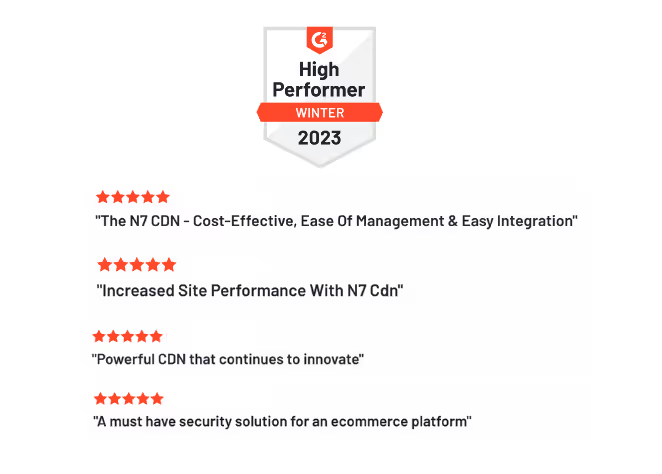What is Multi-CDN and how does it work?

CDN comes with its own sets of issues to as it becomes a single point of failure & relying on a single Content Delivery Network (CDN) exposes an online content provider to the risk of degraded performance and outages. Netflix is reported to have three different CDN providers.
What is a Multi CDN?
A Multi CDN (Content Delivery Network) is an advanced content delivery strategy that uses multiple CDN providers simultaneously to serve digital content. Rather than relying on a single provider, a Multi CDN setup dynamically routes user requests to the fastest or most reliable CDN based on factors like location, traffic load, and network health. This significantly improves global performance, reduces latency, and ensures higher availability and resilience—especially in regions where a single CDN may have limited infrastructure.
Multi CDN also adds a layer of redundancy—if one provider experiences an outage or cyberattack, others seamlessly take over, preventing downtime. Leading businesses adopt Multi CDN architectures to mitigate vendor lock-in, optimize delivery across geographies, and maintain consistent uptime. As digital demands grow globally, Multi CDN is fast becoming a best practice for businesses aiming for speed, scale, and uninterrupted user experiences.
How Multi CDN works?
A Multi CDN configuration can be implemented in two main ways: through a CDN aggregator or using a load balancer.
A CDN aggregator unifies multiple CDN providers into a single management interface, making it easier to control without needing to configure each CDN individually. While this simplifies operations and saves time, it can reduce flexibility—fine-tuning individual CDN behaviors becomes limited due to centralized control.
Alternatively, load balancing—using services like Amazon Route S3—offers more precision. It intelligently distributes traffic across multiple CDNs based on the user’s geographic location and real-time server performance. For example, a request from France would be directed to the CDN with the lowest latency in Europe, while a user in the U.S. would be served via the optimal North American CDN node.
This method ensures faster content delivery, avoids server overload, and delivers consistently low-latency experiences across regions.
Multi-CDN strategy
A multi-CDN strategy allows a content provider to share traffic between two or more providers to mitigate the risks of issues with any individual provider. Be it micro-outages, peak-hour performance degradation or other issues, having alternatives (multi CDN) allows content providers to protect their end-users against poor user-experience and its impact caused by a single CDN.
Benefits of using a Multi-CDN strategy
There are a small number of highly capable CDN providers in the market today that can be combined to create an effective multi-CDN architecture. The benefits of a Multi-CDN strategy are:
1) Eliminate Single Point of Failure
The main benefit of adopting multi CDN is that no single point failure can halt all the activities on your websites. When one CDN provider experiences an outage, Multi CDN automatically routes web traffic through another provider. Web content delivered by Multi CDNs is not affected by traffic spikes or fluctuations.
2) Increased Geographical Presence
Multi CDN also helps companies leverage more POPs they were not initially serving by leveraging different CDN providers in those regions. This helps companies deliver a consistent user experience to all the customers around the globe.
3) Divide Traffic as per strength of CDNs
All CDN are not alike, and they have different strengths with respect to Geography or asset class, etc. Routing the traffic with that knowledge through the CDN helps leverage the best of the best.
4) Optimized Model – Select best model for various content
Opting for multi CDN gives companies higher control over their costs. Businesses can focus on critical features and offerings and look for the best model to deliver content. For example, they can use different CDN providers for static and dynamic content. This flexibility and control allow them to go to providers who provide the same performance but for a lower rate, optimizing their whole model.
The increase in video streaming, video gaming, and video calling related internet services like Zoom, MS Teams, etc., put a considerable load on the networks that rely on CDN to reach all their users. So, when these infrastructure providers fail, they trigger a domino effect, taking down many websites, applications and other services with them. The failures in recent times reveal the vulnerability of the infrastructure. The only way to reduce the occurrences of these incidents is to increase resilience by having a diverse network of CDN providers.
Gotchas – Things to watch out in a multi-CDN approach
While multi CDN approach has its benefits, there are some limitations to it. Some CDNs for example provide front-end-optimizations which leads to content being non-transferable to a different CDN provider. Cache strategies across different CDN providers should be reviewed to be aware of the differences and inconsistencies that can lead to broken pages as certain CDNs cannot update their caches in sync.
How to adopt multi-CDN on your digital property?
Multi-CDN approach can be implemented on any site using DNS. Some DNS systems like Azure Traffic Manager, AWS Route 53, Google Cloud DNS and other DNS providers have varying levels of capability to dynamically decide on different name resolution based on performance or availability of different network endpoints. In this case these endpoints are of different CDN networks. DNS based multi-CDN approach is easy to implement and is agnostic of the CDN providers making it easier to adopt.
Thus, to opt for multi-CDN setup is a proactive step that eliminates the need for reactive ones later. We at Nitrogen implement effective multi-CDN strategies.
Talk to our experts to devise a Multi-CDN strategy for your eCommerce website.
Faq
What is the main advantage of using CDN?
The primary advantage of a CDN is reduced latency. By delivering content from edge servers close to the user, CDNs improve site speed, reliability, and scalability—especially during high traffic or global access.
How Does a Multi CDN Solution Improve Website Performance?
Multi CDN intelligently routes traffic through the fastest and closest CDN, reducing latency, improving load times, and ensuring resilience during traffic spikes or outages. At N7, we optimize this routing dynamically to maintain consistent, high-speed experiences across all geographies.
What Metrics Should Businesses Monitor in a Multi CDN Setup?
Key metrics include latency, cache hit ratio, availability, failover response time, throughput, and Core Web Vitals. At N7, we provide real-time dashboards and insights to track how each CDN performs per region and per user segment.
What Are the Cost Implications of Using Multi CDN Providers?
While multi CDN adds a layer of redundancy, it can increase operational costs. However, N7 helps balance performance with budget through smart traffic routing and usage-based billing models.
How can I use CDN?
You can integrate a CDN through your web server, CMS, or cloud provider. At N7, we offer seamless CDN deployment—whether it’s a single provider or a full multi CDN strategy, along with our performance accelerator (DXA and AIO), SEO booster (SERA) and Security module (MSS).

.png)



